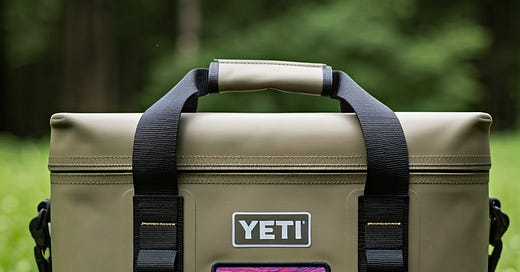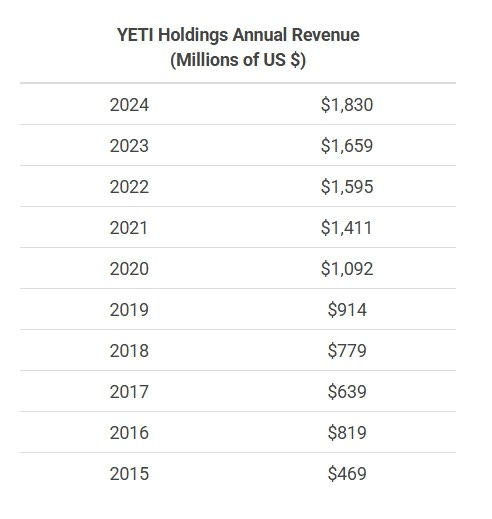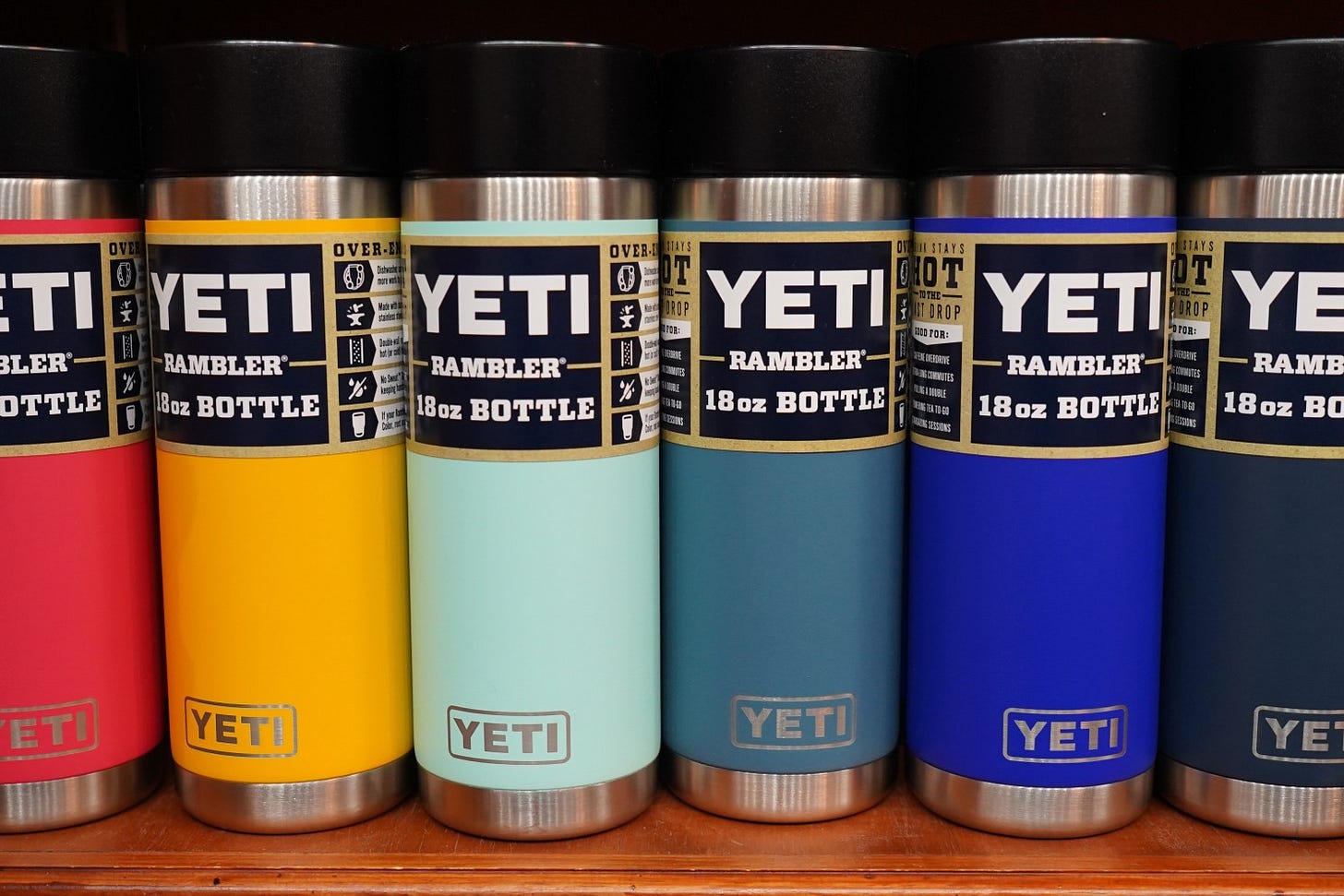Built to Last: The Story Behind YETI’s Unbreakable Brand
How YETI Scaled Obsession into Identity
Build to Thrive is your go-to for business & real estate insights—stories, playbooks and trends. We spotlight trailblazers & deliver actionable strategies and tools to drive success. No fluff, just useful stuff!
Some businesses are born from vision. Others from a market gap. But every now and then, you find one born from obsession.
That’s the story of YETI—a cooler company that didn’t just break into a saturated market. It created a new standard. And along the way, it built a brand people tattooed on their arms.
Before the $2 billion valuation (as of the writing of this article). Before the mass-market retail. Before the partnerships, the IPO, the lifestyle gear...
There were two brothers. A garage. And a cooler that refused to break.
The Texas Roots: Brothers, Boats, and a Better Way
Roy and Ryan Seiders didn’t grow up dreaming of premium coolers. They grew up in Dripping Springs, Texas, immersed in the outdoors. Their dad, Roger, was a craftsman who built custom fishing rods out of the family garage—a detail that matters more than it seems.
From an early age, Roy and Ryan were on boats, in blinds, around campfires. They hunted, they fished, and they watched their gear fail—especially the coolers. Broken hinges, melted ice, and cheap construction weren’t inconveniences. They were liabilities.
In their 20s, Ryan started building custom aluminum boats. Roy followed in their father’s footsteps, selling fishing rods. Both were building for people like themselves: serious outdoorsmen who valued durability and performance over flash.
The cooler problem kept coming up. Every trip was a reminder: their gear couldn’t keep up with the way they lived.
Why is no one making a cooler for people like us?
But they’d been raised in a culture of craftsmanship—where if it doesn’t work, you fix it. And if it doesn’t exist, you build it.
So in 2006, they did.
A Cooler So Good, It Was Hard to Sell
The first YETI cooler was nothing like the ones you’d find at a gas station. It was heavy, rotomolded, and could keep ice frozen for over a week. It was also over $300.
The brothers didn’t launch with a marketing campaign. No influencer strategy. Just a product.
And at first, people didn’t get it.
Until they did.
They handed coolers to professional guides and outfitters. They went to tournaments, expos, and trade shows. The coolers got tossed in the backs of trucks, beat up on boats, and left under the sun. They didn’t break.
Word spread.
Within a few years, they had something bigger than product-market fit. They had product-market pride.
The Full-Time Leap—and Growing With Help
YETI didn’t become a business overnight. Demand for the coolers grew, they found themselves hand-assembling units in a small warehouse. They were reinvesting profits, managing logistics, and selling through independent retailers.
By 2008–2009, YETI had become a full-time job. The product had proven itself in the field, and the Seiders brothers began expanding the team.
They hired slowly, bringing in people who knew supply chain, operations, and retail. They didn’t chase mass retail or venture capital. They stayed focused.
Fueling Growth: Private Equity and Professionalization
By 2012, the business was thriving—without outside capital. But to take it to the next level, they brought in Cortec Group, a private equity firm known for partnering with founder-led companies.
Cortec brought capital, structure, and experience. And the results showed.
By 2013, YETI was doing over $100 million in annual sales.
In 2015, the brothers brought in a professional CEO, Matt Reintjes, from Vista Outdoor. His job: scale the company without diluting the brand.
Under Reintjes, YETI expanded into direct-to-consumer, built a strong eCommerce engine, and carefully expanded its product lines—all while preserving the product-first, user-obsessed culture that made the brand successful.
The YETI Playbook: 3 Moves That Turned a Commodity into a $5B Brand
Build for a Specific Tribe, Not the Masses
YETI didn’t target everyone. They built for serious outdoorsmen — outfitters, anglers, and backcountry hunters — people who couldn’t afford failure in the wild. Early loyalty came not from ads, but from shared identity.
Solve a Real, Overlooked Problem
At a time when coolers cracked and leaked under pressure, YETI delivered uncompromising durability. They didn’t just make a better cooler; they made gear extreme users could bet their trip on.
Scale with Operational Excellence
YETI didn’t sprint to big-box stores or flood Amazon. They fortified their supply chain, hired carefully, and protected product quality — growing with discipline, not hype.
Why This Story Matters to Builders
What strikes me about YETI is that their journey mirrors the arc I see in so many resilient, founder-led companies and one of the tenets behind this publication. The B.U.I.L.D. process.
B reak down the challenge (cheap, unreliable gear for serious outdoorsmen)
U ncover the hidden leverage (product obsession + niche credibility)
I magine a strategic path forward (starting elite, building a tribe, then expanding)
L ay the execution roadmap (measured product rollout + pro leadership + ops discipline)
D rive results with structure and accountability (from garage to IPO without losing the brand soul)
YETI didn’t grow fast. They grew right.
What to Ask Yourself
If you're building something right now, ask yourself:
Am I racing for scale, or building something people will never want to replace?
Because in the end, cold drinks are great. But building something that lasts? That’s the real win.
Until the next edition. Build smarter. Build with intention.
Feel free to share your comments. Tell us what you like us to write about.
Juan Salas-Romer
Click here to watch the YETI story.
Readers who enjoyed this article, also enjoyed reading these ones:
What it Takes to be a Disruptor in the Beer Industry
What It Takes to Turn a Small Bake Shop Into a $500M dollar business National Phenomenon
Disclaimer: The insights and analysis in this article are based on publicly available information, interviews, and reports from various sources. While every effort has been made to ensure accuracy, some interpretations are inferred and may not fully reflect the perspectives of Roy and Ryan Seiders or the complete details of her journey.
Sources: YETI Company History – YETI Official Site, IPO & Financial Data – Macrotrends: YETI Revenue, TradingView Financials, Founder Interviews –PE Investment Insight – Cortec Group Portfolio, Consumer Behavior & Branding Analysis – Harvard Business Review: People Don’t Buy Products, They Buy Identities, Media Features –
About the Author
Juan Salas-Romer is the Founder and Editor of Build to Thrive and the President & CEO of NHR Group, a real estate investment and development firm focused on transformative real estate and business turnaround projects. An award-winning investor and business development leader, Juan brings over 20 years of experience driving companies from inception to 7-figure revenues across the finance, real estate, hospitality, and education sectors. His work sits at the intersection of economic growth, innovation, and community impact. Linkedin bio: Juan Salas-Romer
© 2025 Build to Thrive. All Rights Reserved.











What do Yeti and Athletic Brewing have in common?